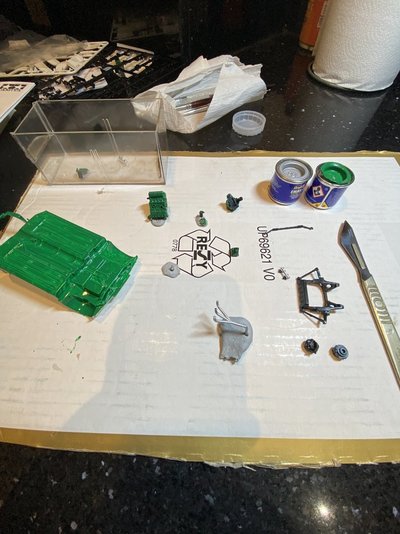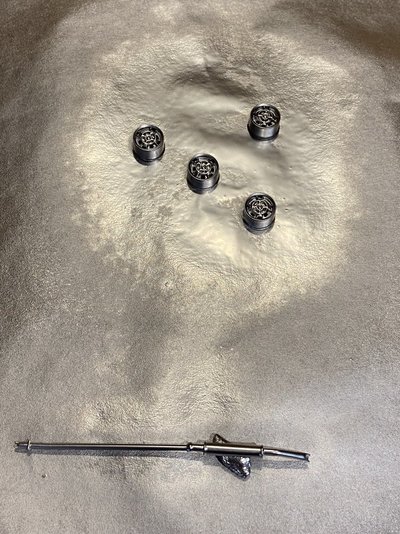blackolive (Ste)
Member
- Messages
- 1,331
- Location
- Chorley
Ive got a few boats kits to convert to radio control once I get round to it, and I try and get 2 of each kit as then you have spare parts to modify.
View attachment 422656
View attachment 422657
ohh and may as well show some of my smaller radio controlled boats that I play with on a lake
View attachment 422658
the landing craft )2nd from the left) is from a revell kit, the paddleboat (in the middle) is scratch built from styrene, and was designed as I went along, so no general arrangement drawings for it, just some parts that need to be made accurately. the other 3 are toys that have been converted to radio control
as for painting larger area, here's something I posted earlier this year
with airbrushing its not just a case of thinning the paint, it also depends on the area you're trying to paint, for the model boats Im building I use both single acting ones like this one

PRO MINI AIR BRUSH KIT ARTIST CRAFTS AIRBRUSH SPRAY GUN Airbrush Compressor | eBay
The paint flow and spray pattern are adjusted turning the fluid cap situated at the front of the airbrush. Suitable for general artwork, drawing, crafts, plastic models and art student use. The air regulator valve is designed for propellant cans.www.ebay.co.uk
and double acting ones like this one (I used one with interchangeable cups though)
I find that the double acting ones are good for very small areas (like the white piece in the photo below because of its legs) as I find the spray is very dry (even with a larger 0.5mm needle and nozzle), so if spraying large area, the air will dry the sprayed finish, so its hard to get a wet finish, unless you go over the same area several times and it ends up being a thicker coat of paint
for larger areas I use single action airbrushes (like the grey part in the photo) as the needle and nozzle is about 0.8mm, so it allows more paint to be used and you can get a wet finish, it also helps that the single action airbrush has a wider spray cone so its easier to get a more consistent finish. Also show are the primers that I use that are designed for spraying from the bottle (for models) and I spray at 20psi, so its not the consistency of the paint that is the issue, its the design of the airbrush. the ones I use are cheap generic ones (even though my brother in law sells ones for up to £250).

if you're painting by brush rather than airbrush, for larger areas, I'd go for a flat brush thin the paint 1:1 paint:thinners if you're using enamel paint and on the subject of painting, if you need to mask something, dont use household masking tape, use Tamiya masking tape as it gives a very clean line.
there are loads of videos about model making on youtube and even how to make specific models, this one may be the same as you're making (although this one is modified)
Those airbrushes look like christmas present territory. Can you get tins of pressurised gas to run them or do they require a small compressor ?










 anyhow easy link too what i posted up on the NSRA ....
anyhow easy link too what i posted up on the NSRA ....

